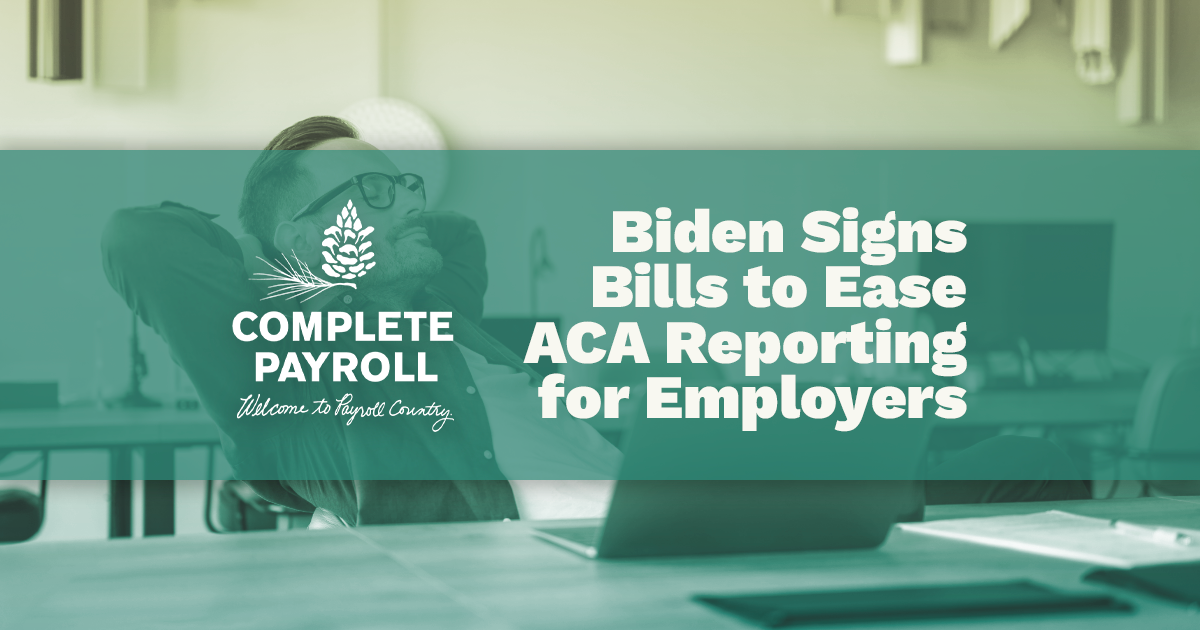While the Affordable Care Act was once a topic of great debate among policymakers and voters alike, today’s reality is pretty straightforward: the ACA isn’t going anywhere.
Many employers struggle to consistently and accurately fulfill their obligation when it comes to the Affordable Care Act’s reporting guidelines. Late and incorrect forms can lead to expensive fines, especially if you are fined the maximum amount for each of the workers on your payroll.
What are the basic reporting requirements that employers must be aware of?
Any employer with 50 or more full-time employees (FTEs) must complete the 1095 and 1094 transmittal reporting processes annually. Additionally, self-insured employers with any number of workers must also fulfill the same tax reporting requirements. These employers are “ALEs,” which stands for Applicable Large Employers.
Although the Tax Cuts and Jobs Act of 2017 removed the penalty for non-compliance with the individual mandate, employers are still mandated to report this information to the IRS. It is important that employers are not operating under the assumption that the ACA has changed significantly.
Non-compliant ALEs are identified by the IRS and sent Letter 5699. Letter 5699 identifies the employer as an ALE that has neglected its ACA reporting obligation. If you receive this letter, you will be asked to confirm several things: the filing name, Employer Identification Number (IEN), and filing date for ACA tax returns. At that point, Letter 226J will notify you of any penalties that are being levied.
As of 2020, the IRS had levied over $4 billion in these fines.
What about Sections 6055 & 6056?
In addition to filing accurate 1095s and 1094s, ALEs must also report health coverage information to the IRS. Annual statements to their employees are another requirement. Together, these forms confirm to the federal government that you are providing insurance as provided by law and that you are informing your employees of their insurance options.
If you don’t offer affordable health insurance to your full-time staff, your company will be subject to additional penalties.
What kind of Minimum Essential Coverage are you required to provide?
Minimum Essential Coverage (MEC) defines what kind of coverage meets the legal minimum requirements.
At least 95% of your full-time employees (and their qualifying dependents) must be offered this minimum coverage. You also need to provide at least one full-time employee with a premium tax credit, which is provided through the ACA marketplace.
Failing to provide this will result in penalties. What if you provide MEC but the plan is either unaffordable or doesn’t provide minimum value, which is defined as paying for at least 60% of covered benefits? More penalties.
What are the means of calculating affordability?
Affordability is determined by the percentage of the employee’s gross household income. The lowest-cost, self-only minimum value coverage cannot exceed 9.86% of that gross household income.
You can calculate this by looking at the employee’s W-2, their rate of pay, or the federal poverty line.
W-2 wage: Box 1 of their current W-2 will provide current gross income. A quick conversion will show you if the premiums exceed 9.86% of that number.
Rate of pay: This calculation comes from multiplying the worker’s lowest hourly wage in a month by 130. If the required monthly premium is no more than 9.86% of that number, it is considered to be an affordable plan. Please note that this option does not work on a commission-only basis.
Federal poverty line: Take the federal poverty line of a single individual and divide it by 12. If the premium is no more than 9.86% of that number, then it is affordable.
What kind of plans generally meet these requirements?
The good news is that the majority of broad-based plans meet these legal requirements, as well as government-sponsored programs (including Medicare Part A, Medicare Part C, most TRICARE and most Medicaid, CHIP, some Veterans plans, Peace Corps plans, and the DOD).
Employer-sponsored coverage should generally be under ERISA, and individual market coverage. “Grandfathered” plans that have not been changed since before the ACA went into effect also qualify.
Feeling overwhelmed? Help is available from Complete Payroll.
We understand! This is not easy to navigate.
Ensuring that all of these calculations are correct, aligned with current federal standards, and submitted accurately and within the required time frame can be a stressful reality for employers across countless industries.
Complete Payroll offers ACA Compliance Services to release you from the burden of getting all of this done on your own. Instead of requiring someone in your company to take on the role of ACA expert, regardless of their background or credentials, you can outsource this essential task to our payroll specialists.















-1.jpg?width=1920&name=Complete%20Payroll%20Blog%20Photo%20(3)-1.jpg)
 Get Instant Blog Notifications
Get Instant Blog Notifications

.jpg)
.jpg)